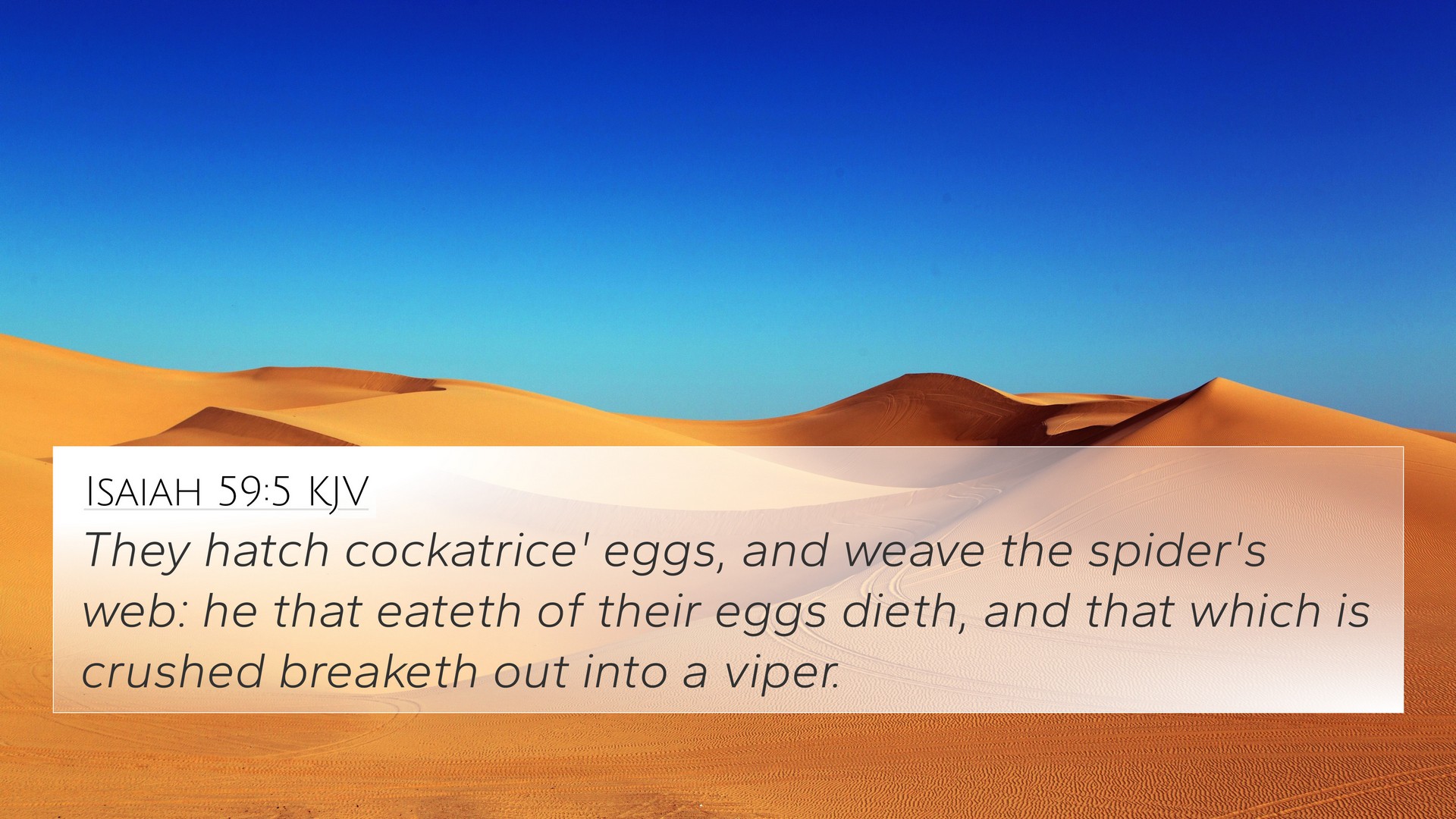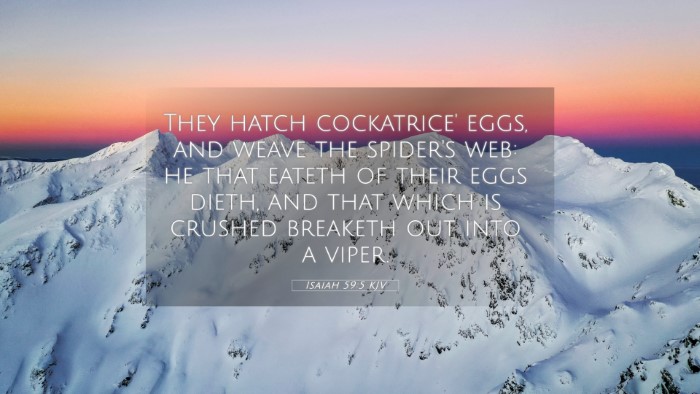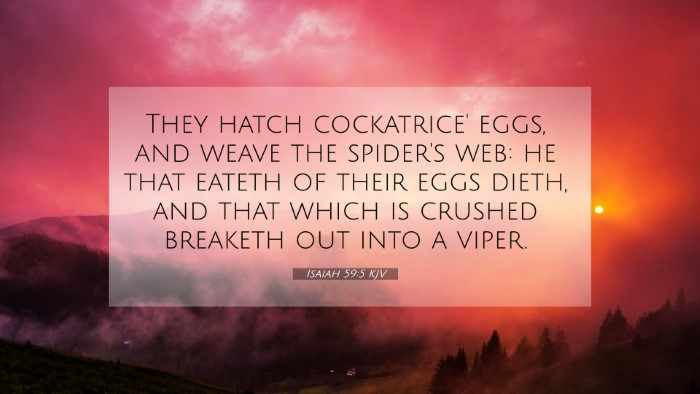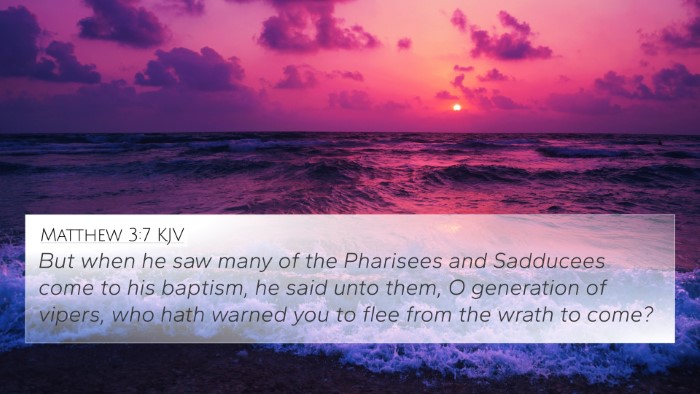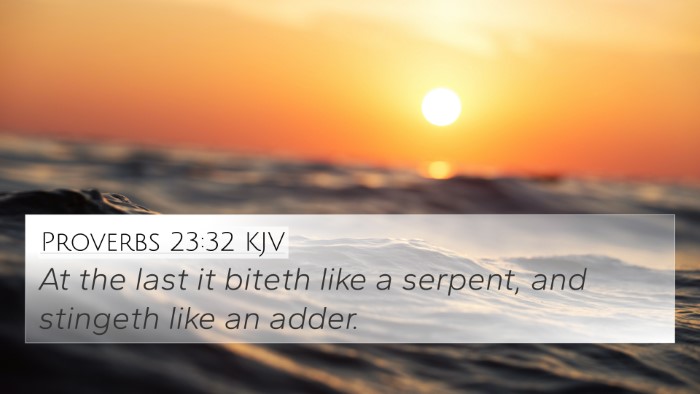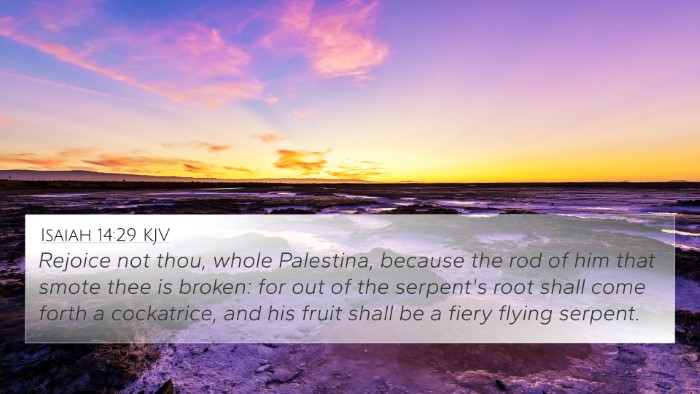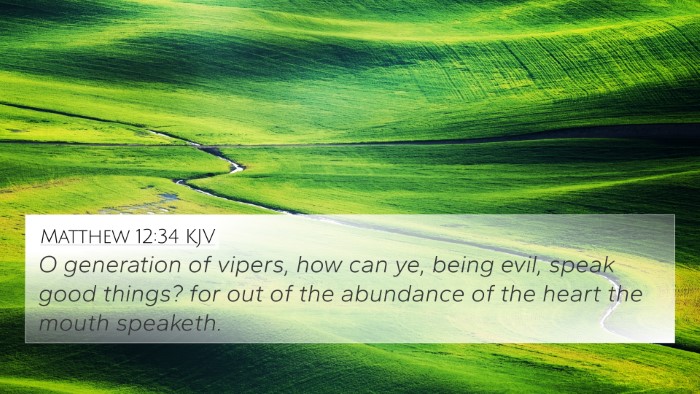Understanding Isaiah 59:5
Isaiah 59:5 states: "They hatch cockatrice eggs, and weave the spider's web: he that eateth of their eggs dieth, and that which is crushed breaketh out into a viper." This verse employs vivid imagery to convey profound spiritual truths about the sinful nature and its consequences.
Context and Background
The Book of Isaiah is a prophetic text that addresses the people of Israel during a period of moral decline and impending judgment. Chapter 59 specifically deals with the separation between God and His people due to their iniquities. This verse serves as a metaphor for the destructive outcomes of sinful actions.
Commentary Insights
- Matthew Henry's Commentary: Henry emphasizes that the reference to "cockatrice eggs" symbolizes the poisonous results of evil plans that will eventually lead to death. The imagery reflects the danger of indulging in sin and its consequences.
- Albert Barnes’ Notes: Barnes interprets this verse as an illustration of the futile efforts and deceptions that arise from a sinful heart. The mention of "spider's web" symbolizes entrapment through sin, demonstrating how sins can ensnare individuals.
- Adam Clarke’s Commentary: Clarke points to the notion that the actions depicted (hatching eggs) represent the initiation of evil thoughts that, if acted upon, could lead to spiritual destruction. He connects this idea to the larger theme of wrongful actions leading to a cycle of sin.
Thematic Connections
This verse can be cross-referenced with several other scripture passages that explore similar themes of sin, its consequences, and the need for repentance:
- James 1:15: "Then when lust hath conceived, it bringeth forth sin: and sin, when it is finished, bringeth forth death." This reinforces the idea that sinful actions lead to dire consequences, paralleling Isaiah 59:5.
- Proverbs 14:12: "There is a way which seemeth right unto a man, but the end thereof are the ways of death." This verse reflects the deceptive nature of sin similar to the hatchings described in Isaiah.
- Galatians 6:7: "Be not deceived; God is not mocked: for whatsoever a man soweth, that shall he also reap." This emphasizes the inevitable outcome of sinful actions as depicted in Isaiah 59:5.
- Romans 6:23: "For the wages of sin is death; but the gift of God is eternal life through Jesus Christ our Lord." This aligns with the fatal consequences of eating the "cockatrice eggs."
- Matthew 7:17-20: "Even so every good tree bringeth forth good fruit; but a corrupt tree bringeth forth evil fruit." This successfully connects to the concept of sin producing harmful outcomes illustrated in Isaiah 59:5.
- Job 31:9: "If mine heart have been deceived by a woman, or if I have laid wait at my neighbour's door;" highlights the dangers of temptation and the destruction that follows.
- 1 Peter 5:8: "Be sober, be vigilant; because your adversary the devil, as a roaring lion, walketh about, seeking whom he may devour." This captures the essence of being led into sin and the serious outcomes that can result.
Conclusion
Isaiah 59:5 serves as a stern warning of the consequences of sin and the vital importance of recognizing its dangers. The metaphors of hatching poisonous eggs and spinning webs echo the spiritual entrapment and death that sin invariably brings. Understanding this verse through public domain commentaries reinforces its message while providing an inter-Biblical dialogue with other scriptural insights that likewise address the toxicity of sin.
Tools for Bible Cross-Referencing
To gain a deeper understanding of verses like Isaiah 59:5, one can utilize various tools for Bible cross-referencing:
- Bible Concordance: Helps locate specific verses and related passages quickly.
- Bible Cross-Reference Guide: Offers organized lists of verses that relate to key themes.
- Cross-Reference Bible Study: Explores scripture connections for thematic analysis.
- Bible Chain References: Links of verses that connect one to another in thematic sequences.
- Comprehensive Bible Cross-Reference Materials: Extensive resources that compile related scriptures and themes for in-depth study.
